#Epaulette shark
Explore tagged Tumblr posts
Text

literally!!
#sharks#marine animals#marine biology#shark#atlantic ocean#pacific ocean#ocean#shark post#shark memes#lemon shark#epaulette shark#hammerhead shark#blacktip reef shark#great white shark#whale shark#chilling pic moments before 14ft great white shark mauled surfer shows haunting clue beast is about to pounce#shark thoughts
11K notes
·
View notes
Text

september’s silly shark of the month is an epaulette shark ^_^ join my ko-fi before the end of august to get this as a postcard + sticker!
#sharks#i love sharks#shark week#shark#ocean#my art#art#illustration#artists on tumblr#epaulette shark
1K notes
·
View notes
Text
Hi fishblr im seling fishy stickers on my etsy


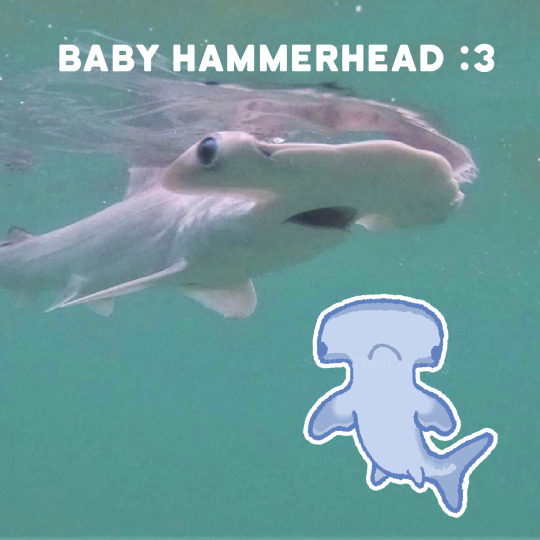
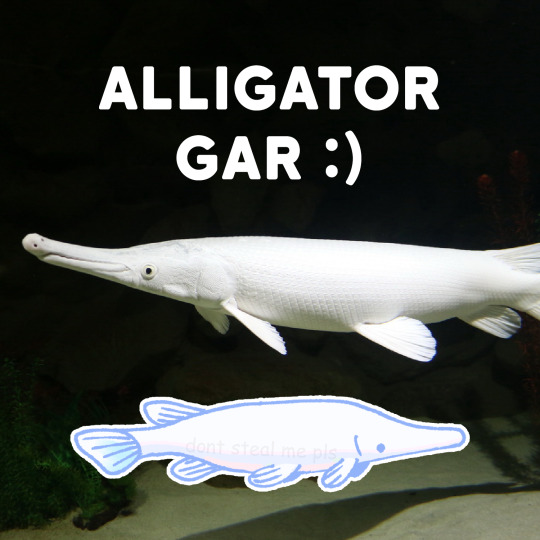
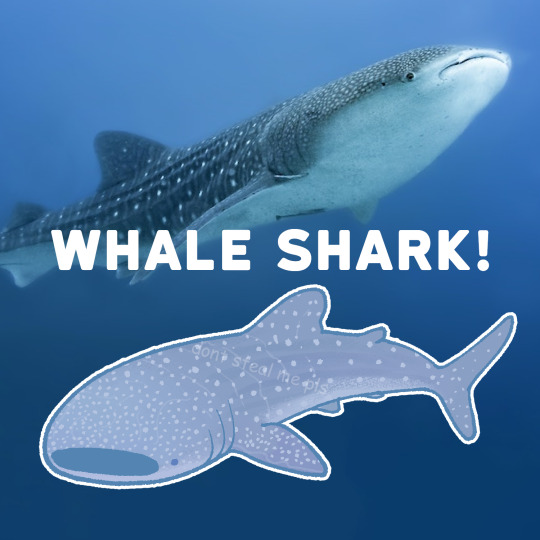

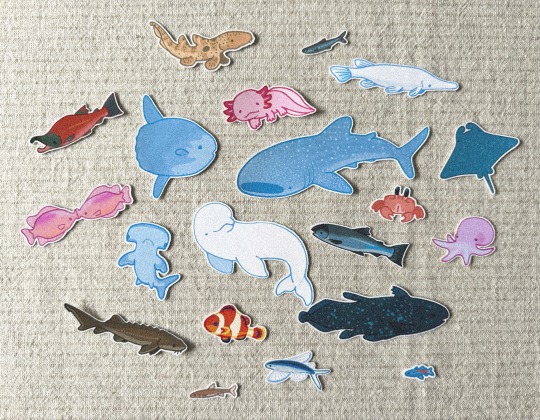
they're all hand made and hand drawn and they are rly soft :) check them out if you'd like
#coelacanth#sturgeon#alligator gar#whale shark#mola mola#sunfish#hammerhead#axolotl#octopus#crab#epaulette shark#..among others#fish#fishblr#stickers
3K notes
·
View notes
Note
hands you an epaulette shark. heehoo.


519 notes
·
View notes
Text
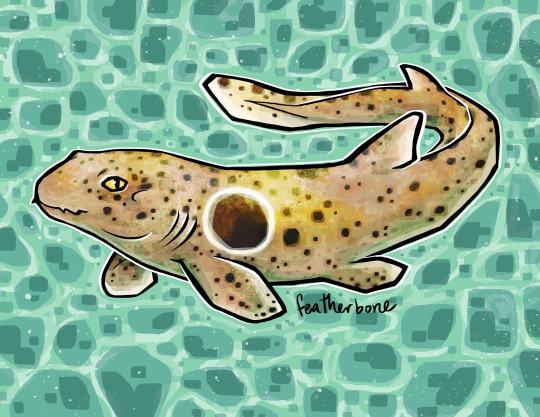
[ID: an illustration of a pale gold shark facing to the left with its tail curled above it. It has small black spots all over, and one large white-ringed black spot just above its pectoral fin. The background is a pebble pattern in teal. End.]
Epaulette shark! A small species of carpet shark found in shallow waters off Australia and New Guinea, named for the large black spots on its "shoulders", which are reminiscent of military uniform epaulettes. Those fancy fringey gold things on the coat shoulders.
294 notes
·
View notes
Text

Submitted for classification by anonymous.
150 notes
·
View notes
Text

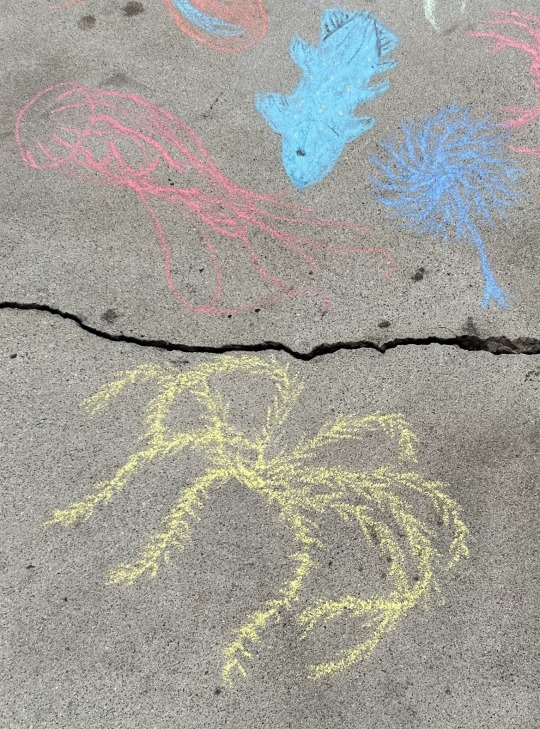
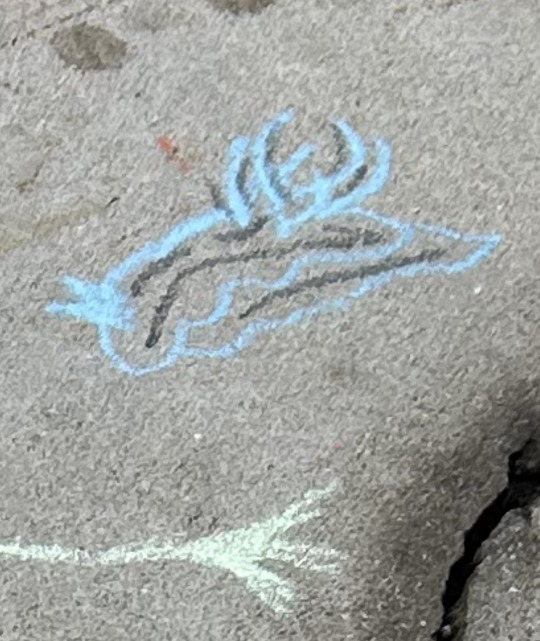
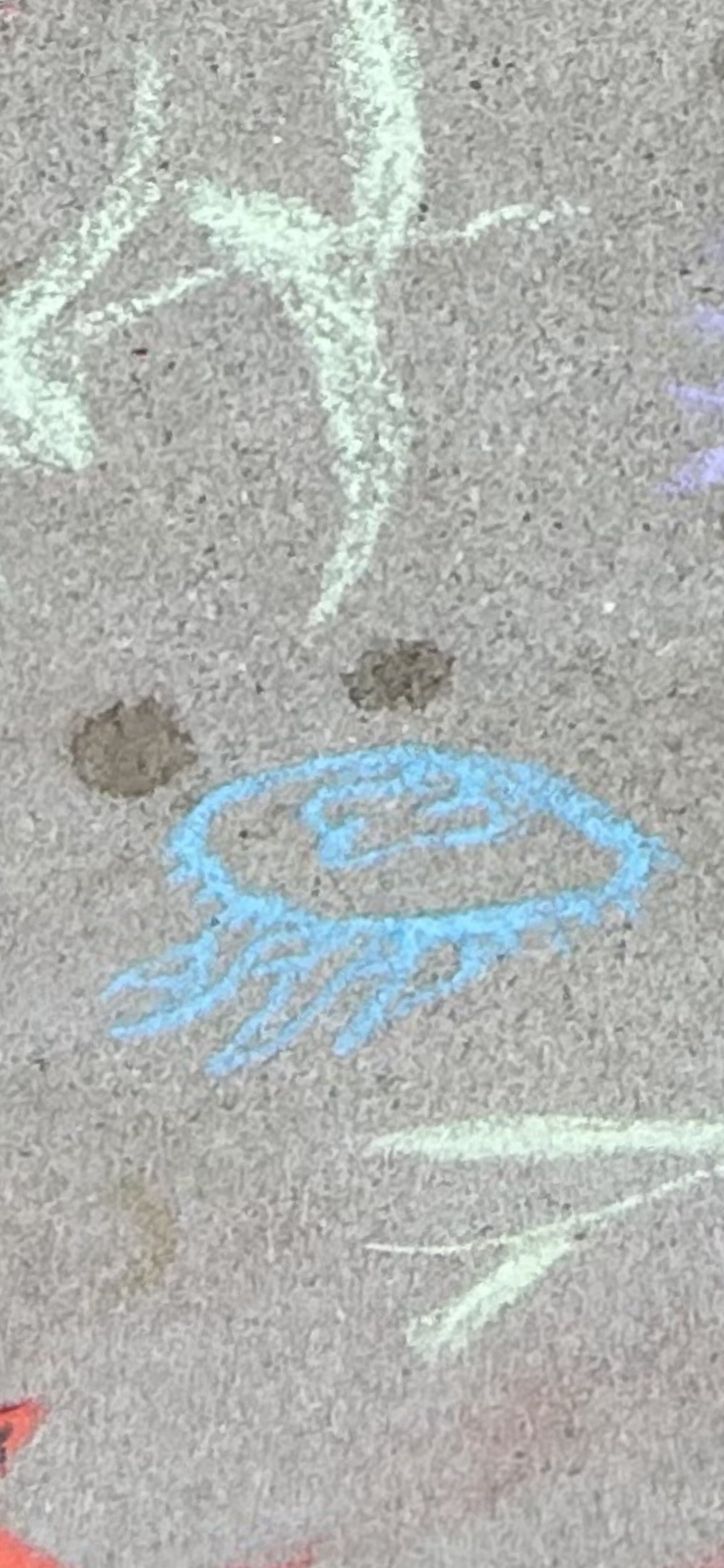
#epaulette shark#sea nettle#jellyfish#coelacanth#sea lily#feather star#chromodoris#nudibranch#moon jelly#ocean#art#chalk art#drawing
584 notes
·
View notes
Text
I love how people try and deny evolution as if there aren't so many fish with legs at the moment
#mudskipper#epaulette shark#frogfish#red lipped batfish#to name some from the top of my head#evolution#marine biology#eddie in the ocean#marine biology shitpost
710 notes
·
View notes
Text
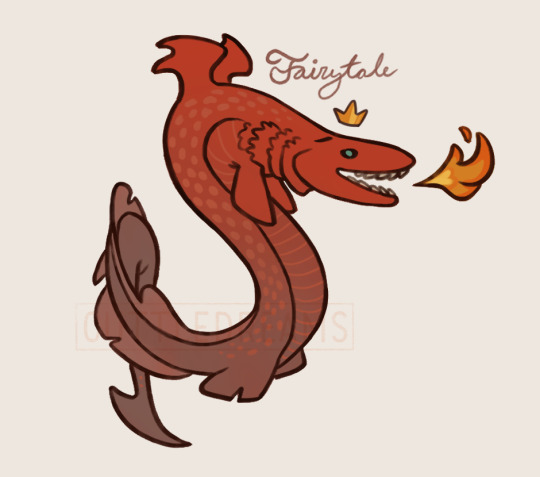
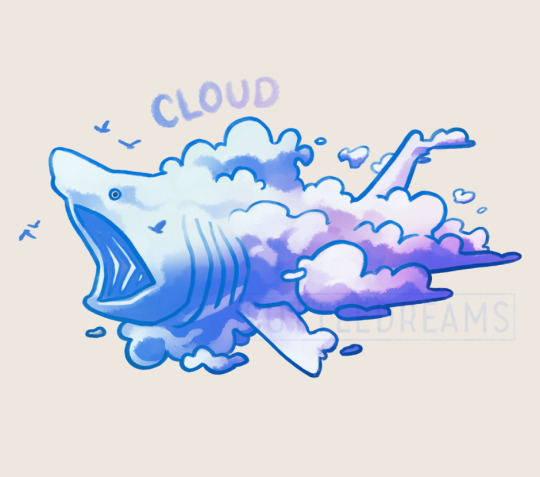

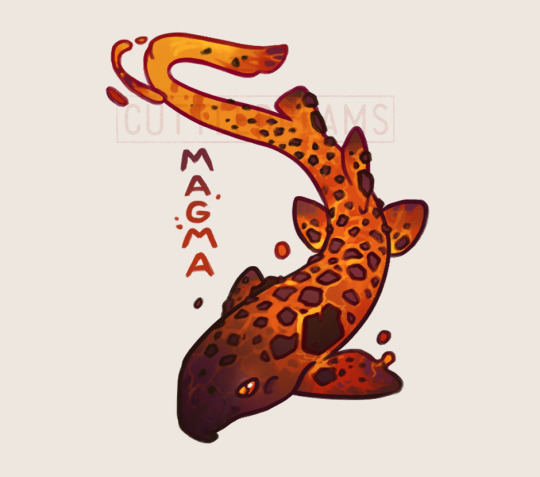
Sharktober!!!!
I won't be doing every prompt since I'm already also doing Invertober but I'm pretty happy with the prompt days I picked out!
Set One:
Day 1: Fairytale Shark (Frilled Shark)
Day 3: Cloud Shark (Basking Shark)
Day 7: Jelly Shark (Greenland Shark)
Day 9: Magma Shark (Epaulette Shark)
Sharktober prompt list is hosted by @requinoesis!
>Prompt List<
#Cuttledreams#sharktober#frilled shark#basking shark#greenland shark#epaulette shark#sharks#sharktober2023
513 notes
·
View notes
Text
Wet Beast Wednesday: epaulette shark
Stand at attention for the epaulette shark, the honorable (and adorable) general of the tide pools. These little guys really go against the image of a shark in media. Hollywood insist on portraying sharks as massive, violent predators that prowl the waves and will eat anyone and anything they find. The Epaulette shark, by contrast, is small, lives in the shallows, and couldn't hurt you if it wanted to.
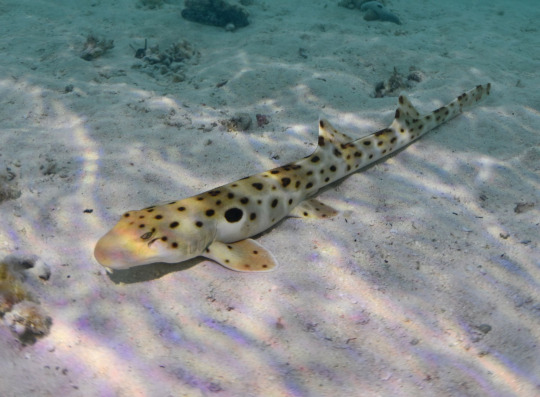
(Image: an epaulette shark resting on the seafloor. It is a small, skinny, and long shark with a short snout and highly elongated tail. The two dorsal fins are located on the back half of the body and the pectoral and pelvic fins are long and paddle-shaped. Its body is a sandy brown and dotted with black spots. A large black spot is behind the pectoral fins. End ID)
Epaulette sharks average 70-90 cm (27-35 in), with the largest one on record being 107 cm (42 in). Over half of that length is made of the caudal peduncle, the part of the spine that the caudal (tail) fin grows out of. The actual fin itself is fairly small and does not have a lower lobe, making it look very slender and distinct from the caudal fins of other sharks (though other members of its family, Hemiscylliidae, share this tail structure). This tail structure makes them less efficient swimmers than most shark species. As a result, they tend to stick to the seafloor and do not often rise into the water column. Their bodies are light to dark brown with many dark spots and one large spot behind each pectoral fin. It is these spots that give the sharks their common name. Their placement makes them resemble epaulettes, decorative shoulder pieces that were and still are often used to demonstrate rank in many European and European-derived militaries. The coloration of the shark is used as camouflage against predators, with the smaller spots breaking up the silhouette and the epaulettes resembling the eyes of a much larger animal. Juveniles have a stripy pattern to their skin that fades as they age.
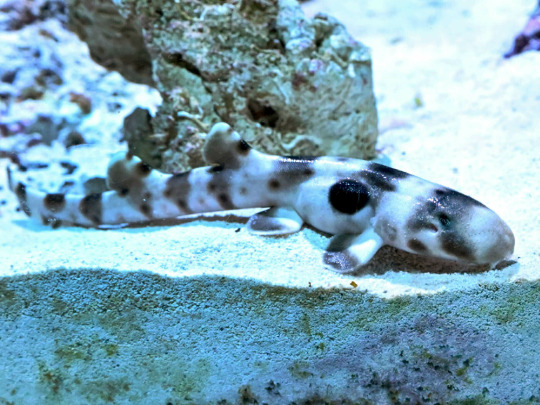
(Image: a juvenile epaulette shark resting on sand. It has the same body shape as the adult, but its skin is pale with darker stripes. End ID)
Epaulette sharks mate from July to December, late spring and summer in the southern hemisphere. Females will often initiate mating by following and nipping the males. Males will use their mouths to hold onto the females while inserting one clasper (the paired reproductive organs of sharks and other cartilaginous fish) into her cloaca. 14 days later, the female will release egg cases, usually two per mating and abandon them. The egg cases will usually get caught in seaweed or coral and remain there. After approximately 120 days, the juvenile sharks hatch. Females are able to mate again immediately after laying the egg cases and can lay up to 50 times per season. Juveniles are born 14-16 cm (5.5-6.5 in) long and grow about 5 cm (2 in) every year. They reach sexual maturity at around 7 years of age when they reach a length of 54-64 cm (21.5-25 in). The maximum lifespan of wild specimens is speculated to be 20-25 years. There have been rare cases of females in captivity reproducing through parthenogenesis after living in tanks with no males.
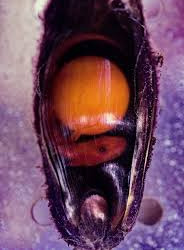
(Image: an epaulette shark egg case. It is an ovoid brown, translucent object. Visible within the egg case is the developing shark. It has the adult's body plan, but is attached to a large, spherical yolk sac. End ID)
Epaulette sharks are found in coastal water from southern New Guinea to northern Australia. They prefer water under 50 m (160 ft) deep and can often be found in extremely shallow water, especially around coral reefs and shorelines. These sharks are often found in tide pools and have a number of adaptations for this lifestyle. While they are capable of swimming, the sharks prefer to walk. They undulate their bodies while using their paddle-like pectoral and pelvic fins to push against the seafloor. The fins have modified skeletons to allow each fin to rotate, increasing their effectiveness as limbs. Using their fins, the sharks can even walk over land, which they do to move into and between tide pools. Because of this, epaulette sharks are studied by biologists for use as a model organism for the transition of vertebrates onto land in the distant past. Epaulette sharks are nocturnal. During the day, they hide from predators in crevices and other places large predators can't enter. At night, they come into the shallows to hunt. They use smell and electroreception to hunt for prey buried under sand. Their preferred food is crustaceans, worms, and small fish. Juveniles prefer soft-bodied animals like worms and fish while adults consume crustaceans primarily. Their teeth can lie flat, allowing the sharks to switch between sharp teeth for eating worms and fish and a hard plate to crush crab and shrimp exoskeletons.
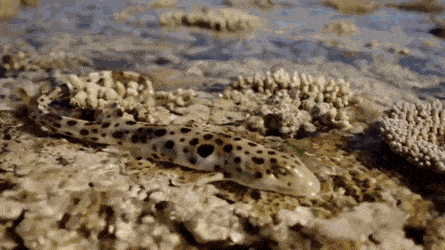
(GIF: an epaulette shark walking through tide pools and over land, showing the motions it makes from different angles. End ID)
Epaulette sharks often get stuck in tide pools overnight. Life in tide pools is harsh as there is a limited supply of dissolved oxygen available and all the animals in the pool use it up. As a result, epaulette sharks have several adaptations to hypoxic (low oxygen) environments. When in hypoxic water, the shark can drop its heart rate and the rate it passes water over the gills. It then dilates certain blood vessels to divert blood to the heart and brain and away from other organs. This causes its blood pressure to drop by over half. It can also lower metabolic activity for parts of the brain, freeing up ATP (the chemical that provides cells with energy) to be used for more critical brain functions. This is aided by shark rains requiring 1/3rd the ATP as the brains of bony fish, further increasing the survivability of the shark. All of this means that an epaulette shark can survive in extremely hypoxic water for 3 hours while still remaining alert and responsive and can survive with no oxygen for an hour with no negative effects. It's notable that they do this in warm water as most animals that can tolerate extreme oxygen deprivation need to be in cold temperatures to do it.
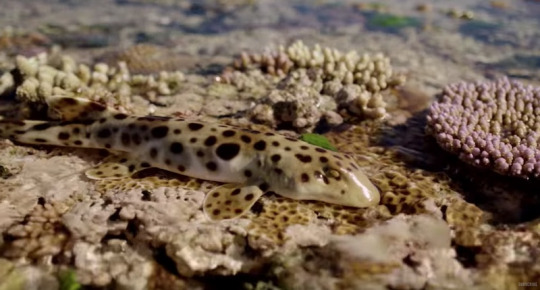
(Image: an epaulette shark resting in a tide pool. The water is barely deep enough to keep it submerged. End ID)
Epaulette sharks are classified as Least Concern by the IUCN, though they are locally threatened in New Guinea. Their primary threats are habitat loss and bycatch. As they are commonly found in coral reefs, coral bleaching threatens their habitat. In addition, it has recently been found that the warming ocean is resulting in pups being born smaller and weaker than they used to be, reducing juvenile survival rates. They show little fear of humans and wild ones will allow humans on the beach to approach them. They have also been known to approach swimmers and divers. Encounters with curious people can harm the sharks, while their only method of defending themselves is a minor bit and they're too slow to crawl away. Their gentle natures and small sizes make epaulette sharks one of the easiest shark species to keep in captivity, both in public and private aquariums. There is now a small demand for captured epaulette sharks for sale on the pet trade.
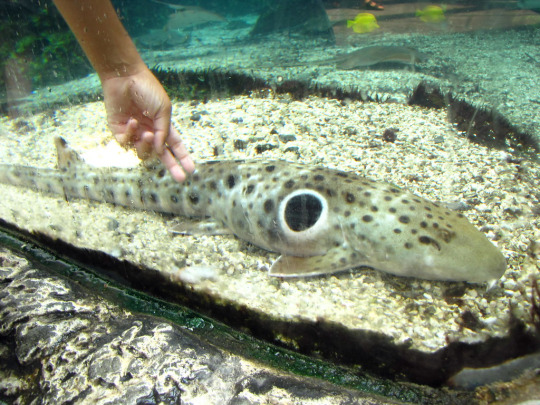
(Image: an epaulette shark in an aquarium touch tank. It is resting on sandy sediment while a human arm reaches in from above, touching it with two fingers. A stingray and two small yellow fish are visible in the background. End ID)
#wet beast wednesday#epaulette shark#shark#sharks#fish#fishblr#fishposting#cartilaginous fish#marine biology#biology#zoology#ecology#animal facts#cute#informative#educational#image described
179 notes
·
View notes
Text
Daily fish fact #795
Epaulette shark!

They can survive up to three and a half hours in low-oxygen conditions by switching off non-essential brain functions, slowing down their heart rate, and diverting blood away from the extremities and towards important organs! They can swim, but their preferred mode of locomotion is a kind of crawling motion.
#fish#fish facts#fishfact#fishblr#marine biology#marine animals#marine life#sea animals#sea creatures#sea life#biology#zoology#sharks#shark#epaulette shark
101 notes
·
View notes
Note
Draw fish
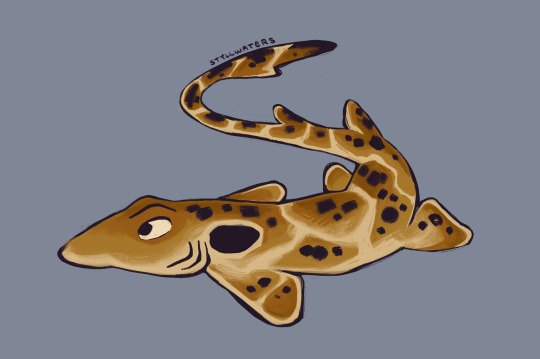
Been getting into epaulette sharks recently :]
#doodle requests#my art#art#illustration#shark#epaulette shark#walking shark#i need to draw more fish
198 notes
·
View notes
Text
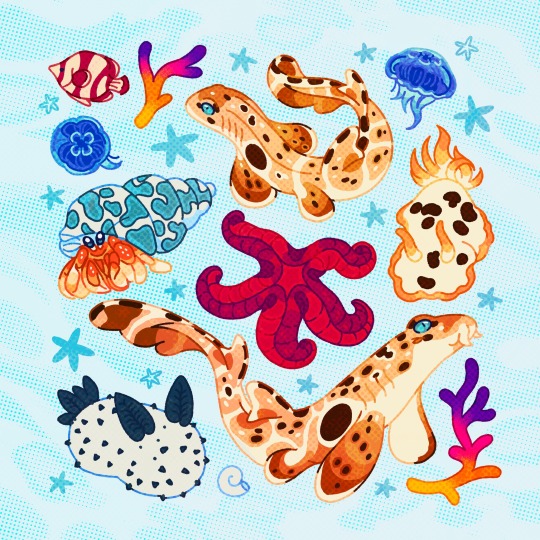
a collection of tide pool critters + epaulette sharks from my ko-fi sticker sheet for september!! join here to get it ^_^
#sharks#i love sharks#shark week#shark#ocean#my art#art#illustration#artists on tumblr#tide pools#epaulette shark#nudibranch#sea bunny
987 notes
·
View notes
Text




epaulette shark pups 🦈
40 notes
·
View notes
Note
Do you have any epualette sharks? They're so wiggly and I love them so much
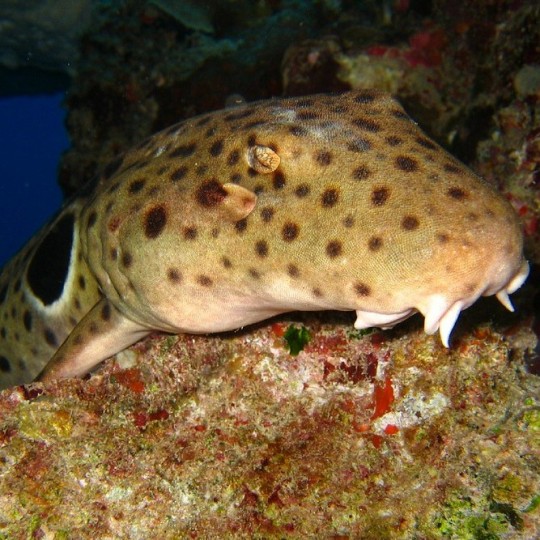
my man takes great care of his mustache
193 notes
·
View notes
Note
If you could have a pet shark (one with the necessary habit to be living happily) which shark would you like?
If I had to pick one, probably either the epaulette shark or the bamboo shark.
Both are small enough to be kept as pets that an average person can care for, and they're rather cute ^^
Epaulettes are especially cool because they use their pectoral and pelvic fins to walk across the reefs at low tide!!!

lookit how cute!!!
55 notes
·
View notes